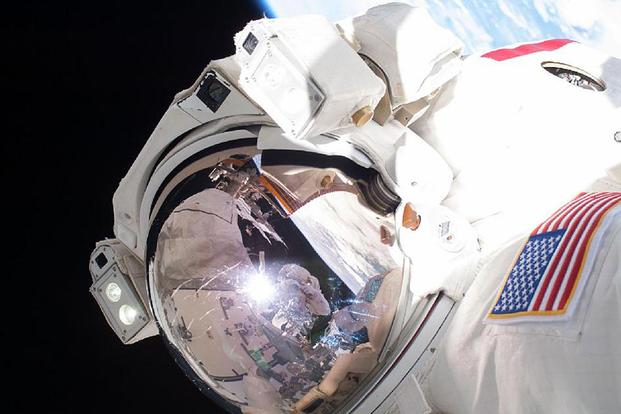Interstellar space travel may not be just for science fiction movies. U.S. scientists are striving toward deep space exploration, and NASA is looking to the U.S. Air Force for help to get there.
NASA leaders visited David Grant Air Force Medical Center at Travis Air Force Base, California, last month to better understand medical advances that could lead to years-long deployments in space, according to a recent Air Force release.
"Although manned space travel isn't new, the distances for the next phase of deep space missions are much greater than ever before for human exploration," the release said.
Officials are looking to develop new technologies, as NASA estimates it will invest in deep-space travel within the next 15 to 20 years, it said.
Related content:
- Cobham Gets Pentagon Contract to Develop Pilot Life Support System
- Air Force Colonel-Turned-Astronaut Details His Time in Space
- Creation of Trump's 'Space Force' May Take Years, Experts Say
NASA officials toured the facility -- one of the largest hospitals in the continental U.S. -- to get a glimpse at Travis medical teams' latest research, as well as the 60th Medical Support Squadron's Clinical Investigation Facility, where medical researchers are pursuing the advancement of military science and technologies.
"The maximum distance we travel now is 230 miles to the International Space Station," Dr. David Loftus, medical officer and principal investigator of the Space Biosciences Research Branch, part of the NASA Ames Research Center at Moffett Field, California, said in the release. "Ultimately, we'll explore unmanned and then manned missions around the moon, then to Mars and beyond.
"With our medical technologies and their abilities to test them with real-world application through research, the partnership will be vital to our success," he added.
CIF's researchers look at science breakthroughs through the lens of military application. With additional research from Livermore National Laboratory in California, the agencies plan to test technologies such as breathing and fluid sensors to monitor astronauts who may one day travel to Mars, roughly 34 million miles from Earth.
"Our technologies are a combined effort between NASA and Livermore National Laboratory," Loftus said in the release. "The advancements of microfluidic and breath analysis technologies combined together to form a very powerful diagnostic instrument."
The innovation stems from a device created by Dr. Jing Li of NASA's Ames Research Center.
"The E-Nose breathalyzer allows you to understand the different volatile compounds in exhaled breath," Loftus said. "This correlates with the various compounds and the health of the patient or warfighter."
The E-nose breathalyzer may also have battlefield applications.
"We feel this technology will be perfect for deep space missions as well as military applications," Loftus said in the release. "We're very interested in the effects of injuries from pulmonary and traumatic brain injury from improvised explosive devices."
Similarly, the Air Force and Navy are working with NASA to try to solve a spike of hypoxia-like episodes in pilots in flight.
-- Oriana Pawlyk can be reached at oriana.pawlyk@military.com. Follow her on Twitter at @Oriana0214.










